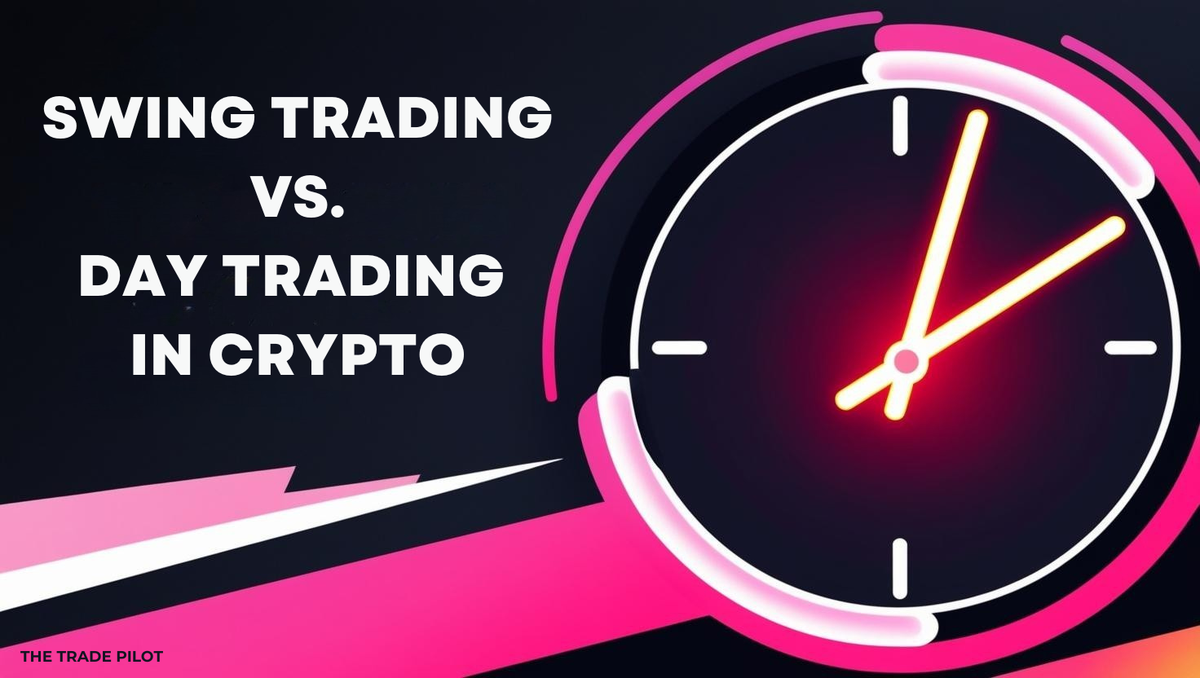Learn the key differences between swing trading and day trading in the crypto market. Discover which style fits your goals, time commitment, and risk tolerance.
In the fast-paced world of crypto, traders often gravitate toward two popular strategies: swing trading and day trading. While both aim to profit from price movements, they differ greatly in terms of timeframes, tactics, risk, and required involvement. Choosing the right style depends on your personal preferences, availability, and risk appetite.
Let’s break down how these two strategies work, how they compare in terms of profitability, and how to decide which might be best for you.
What Is Day Trading?
Day trading involves opening and closing trades within a single day. Some crypto day traders may hold positions for only a few minutes or hours, aiming to profit from small price movements.
Key traits of day trading:
- Requires constant attention and quick decision-making
- Relies heavily on technical indicators like RSI, MACD, and moving averages
- Involves frequent trades in short periods of time
- Typically focuses on highly liquid trading pairs
- Can be stressful and emotionally demanding
This style is often used by full-time traders who have the tools and time to watch charts throughout the day.
What Is Swing Trading?
Swing trading focuses on capturing larger price moves over a longer time frame, typically days or weeks. Swing traders look for trends and reversals, and they often hold positions overnight or even for several days.
Key traits of swing trading:
- Trades are held longer, from a few days to several weeks
- Often uses a mix of technical and fundamental analysis
- Less stressful and more time-flexible
- Suitable for part-time traders or those with other jobs
Swing trading doesn't require you to stare at charts all day. Instead, it involves a more strategic and patient approach.
Main Differences Between Swing Trading and Day Trading
Time Commitment
Day trading demands full-time focus and fast reactions. Swing trading allows more flexibility and fewer hours in front of the screen.
Holding Period
Day trades are closed within the same day—sometimes in minutes. Swing trades can remain open for days or weeks, depending on the market.
Trade Frequency
Day traders may execute dozens of trades a day. Swing traders typically make fewer trades but aim for larger moves.
Risk Exposure
Day traders avoid overnight risks but face intraday volatility. Swing traders hold positions longer, accepting the potential for overnight market moves.
Analysis Methods
Day trading relies mostly on technical indicators. Swing traders often blend technical signals with broader market analysis and news.
Emotional Impact
Day trading can be intense and emotionally draining. Swing trading tends to be less stressful and more methodical.
Which Strategy Is More Profitable?
There’s no one-size-fits-all answer when it comes to profitability. Both swing trading and day trading can be highly profitable—but they require different skill sets and discipline.
Day trading can potentially bring quicker gains due to high-frequency trading, but it also comes with greater emotional and mental stress, higher trading fees, and a greater risk of making impulsive decisions.
Swing trading, on the other hand, tends to focus on bigger price moves and can lead to larger gains per trade, especially in trending markets. However, it may miss out on the many small opportunities that day traders capture.
The truth is, profitability depends more on the trader’s experience, discipline, risk management, and chosen strategy than on the style itself. Some traders thrive in the fast pace of day trading, while others find long-term success with swing trading.
Which Strategy Is Right for You?
Your ideal trading style depends on:
- Your schedule: Can you actively monitor the markets throughout the day?
- Risk appetite: Are you comfortable with quick decisions or prefer thoughtful analysis?
- Experience: Beginners might find swing trading more manageable.
- Personality: If you enjoy fast-paced action, day trading might suit you. If you prefer a calmer pace, swing trading could be a better fit.
Can You Combine Both?
Absolutely. Some traders switch between styles based on market conditions. For example, you might swing trade during slow periods and day trade when volatility is high.
Tools like The Trade Pilot can help automate strategies for both swing and day trading, letting you test different approaches while minimizing emotional bias.
Final Thoughts
Both swing trading and day trading offer unique advantages and challenges in the crypto market. While one may offer faster profits and the other bigger gains over time, the most important factor is how well you can execute and stick to your chosen strategy.
Try both styles in a demo environment, stay disciplined, and refine your strategy over time. With the right mindset and tools, you can make either approach work for you.

